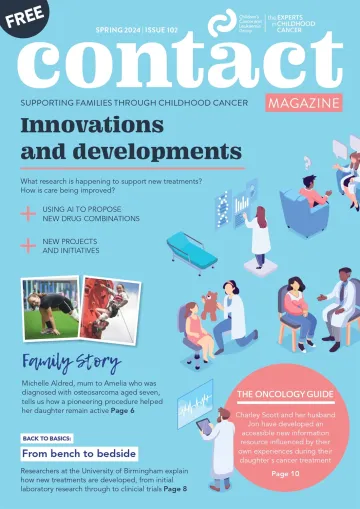Gareth Veal, Professor of Cancer Pharmacology at the Newcastle University Cancer Centre, leads a team helping doctors to personalise treatments through an innovative process called ‘therapeutic drug monitoring’. Here, he tells us more about his work.
Advances in the development of anticancer drugs or chemotherapies have come a long way since the pioneering work of Sidney Farber at Boston Children’s Hospital, where some of the first rationally designed drugs were developed for children’s cancer well over 50 years ago. While overall survival rates for childhood cancer are now above 80%, it’s telling that many of the drugs commonly used for treatment have been around for several decades.
Indeed, drugs developed by Sidney Farber such as methotrexate and actinomycin D are still widely used today for the treatment of acute lymphoblastic leukaemia and Wilms tumour, respectively. While we need to maintain or even improve on the excellent survival rates that have been achieved, more needs to be done to try and reduce the wide-ranging and common side effects of treatment that can severely impact the quality of life of childhood cancer survivors.
Our work
Alongside Dr Shelby Barnett, I lead a programme of work at Newcastle University that’s been focusing on this area for several years. I fittingly spent two years training right around the corner from Boston Children’s Hospital, at the Harvard Institutes of Medicine, before establishing the Newcastle Cancer Centre Pharmacology Group. The group run a national service, currently generously supported by The Little Princess Trust and Cancer Research UK, providing information on individual patient drug exposure for particularly challenging patients including babies being treated in the first days and weeks of their life.
For these patients, doctors often have to make difficult decisions about the most appropriate dose of a drug to give, often with limited scientific information to base the decision on. The team at Newcastle leads a novel approach to treatment which involves collecting a small number of blood samples from a patient on the first day of treatment with a particular chemotherapy. They’re then sent to the Newcastle research laboratories to determine the actual drug exposure that the patient is achieving at a particular dose level.
The idea behind this is that there’s an ideal concentration of drug that we want to achieve in the bloodstream of the patient, to target the cancer cells without causing damage to healthy cells. This can be likened to the ‘Goldilocks principle’, where just the right amount of something is sought. In our case, we want to make sure the drug exposure is high enough to lead to a response to the treatment and, ultimately, survival, but isn’t so high that it risks causing excessive harm to the patient and long-term side effects.
Personalised treatment
By collecting blood samples during and following treatment, our research team is able to measure drug levels in patients and work out whether they may benefit from more or less drugs. The information is then used to adjust the dose they receive, either within or between treatment cycles. This pioneering approach to the personalisation of patient treatment has resulted in the Newcastle team receiving several national awards, including CCLG’s Innovation in Practice Team of the Year Award in 2022. Data generated from this work is also being used to propose novel dosing regimens based on clear pharmacological reasoning, for some of the most challenging-to-treat groups of childhood cancer patients.
Looking ahead
In addition, the group are involved in an exciting collaborative project with scientists at University College London and the spin-out MedTech company Vesynta, to develop point-of-care drug monitoring devices to facilitate the current approach at the patient’s bedside. It’s hoped that this venture will allow a markedly increased number of patients to benefit from drug monitoring treatment approaches in the coming years.
From Contact magazine issue 102 - Spring 2024


